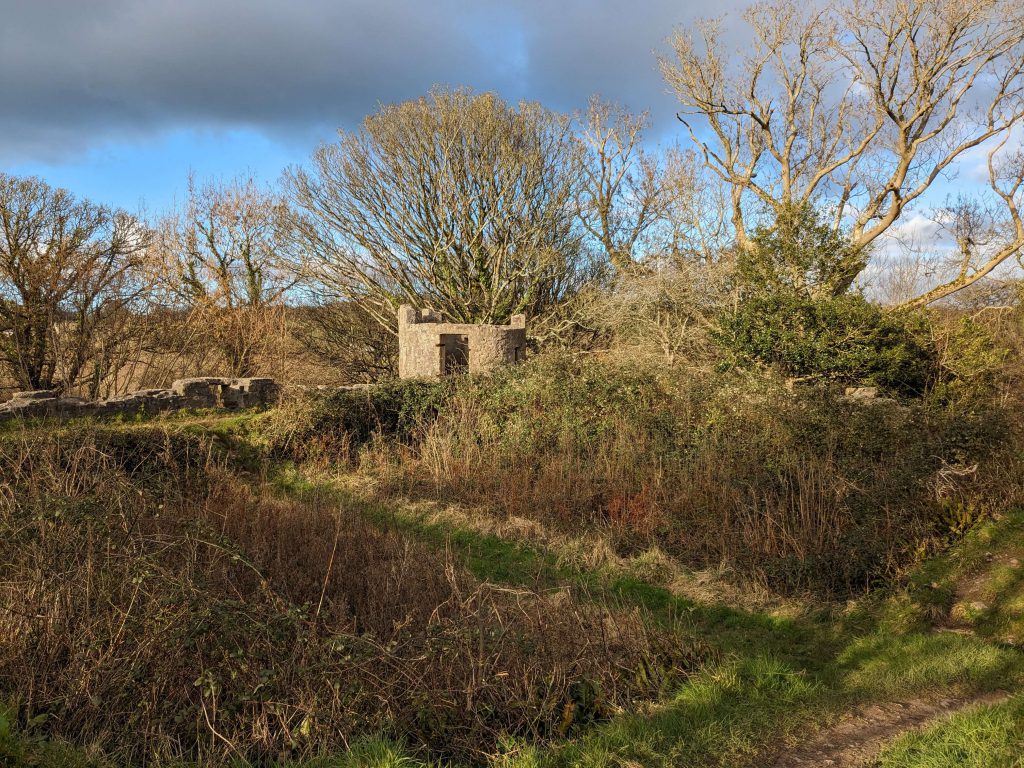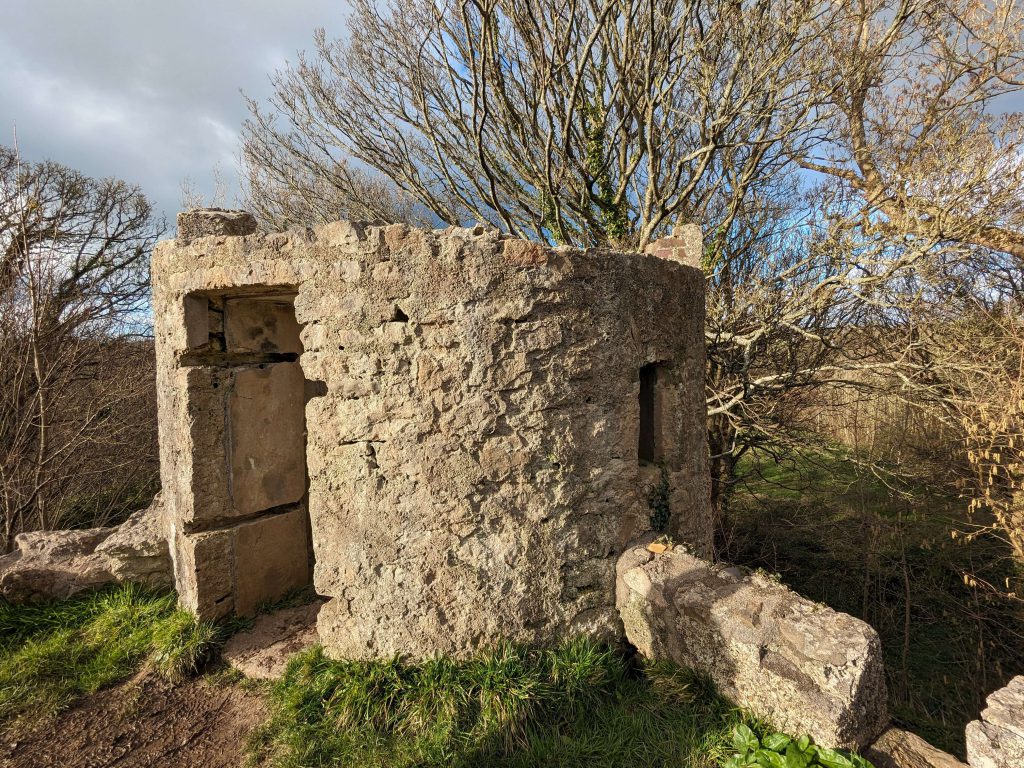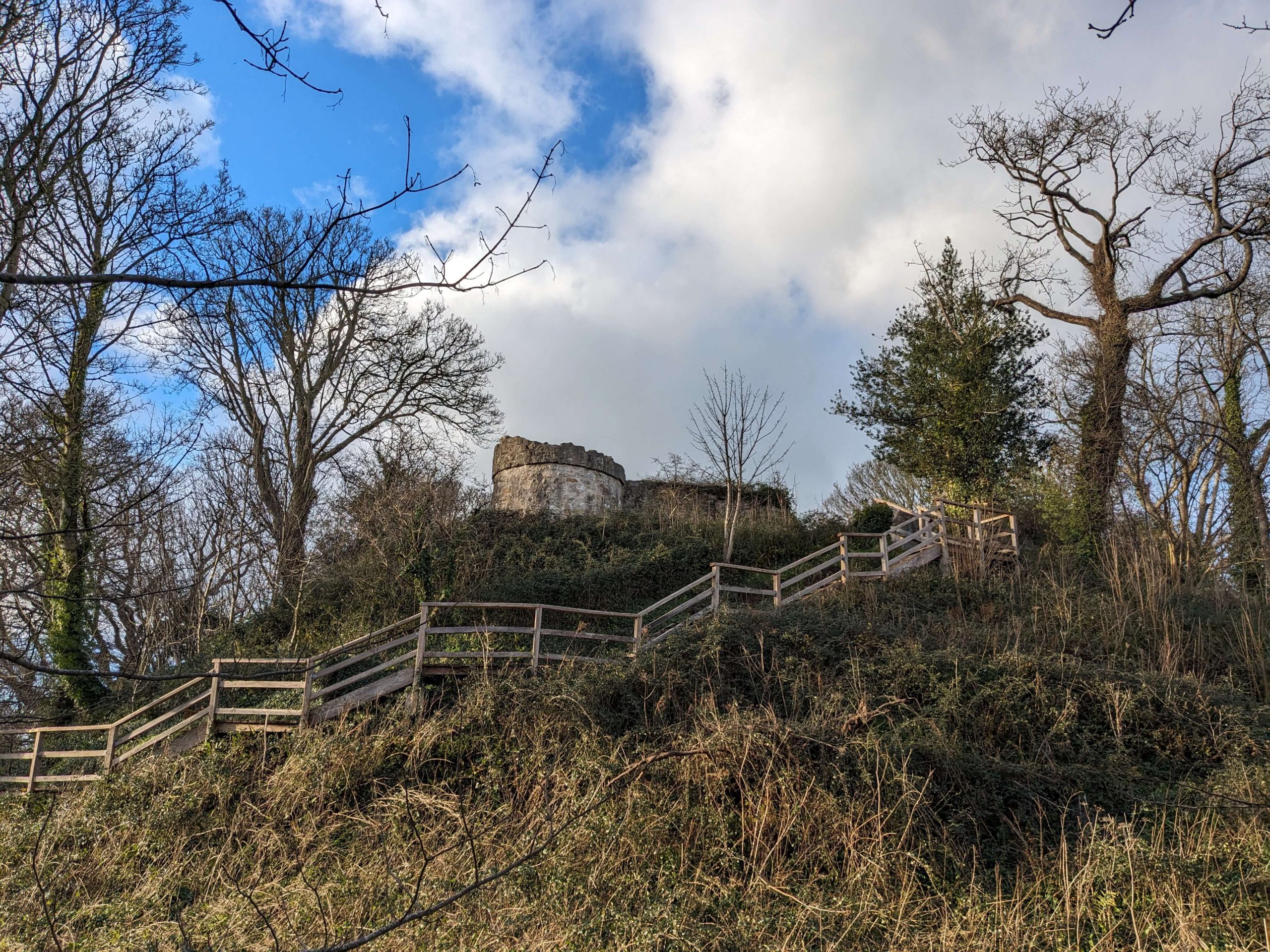Located near the Welsh village of Llangoed, just 2 miles from the bustling town of Beaumaris, lies Castell Aberlleiniog, a lesser-known but historically significant fortification alongside Edward I’s imposing Beaumaris Castle. Constructed in the early Norman period, Castell Aberlleiniog consists of a motte and bailey structure ingeniously positioned atop a steep hill. The castle was commissioned by Hugh d’Avranches, the 1st Earl of Chester, showcasing Norman military engineering prowess.
| Built | 11th Century |
| Type | Norman Castle / Artillery Fort |
| Condition | Ruinous |
| Ownership | Mentor Mon |
| Access | Public – No Admission Charges |
| Postcode | LL58 8RN |
Click here to watch our video exploring Castell Aberlleiniog and discover its history
Hugh d’Avranches ascended to the title of Earl of Chester in 1070. Teaming up with his cousin, Robert of Rhuddlan, in 1072, they initiated hostilities against the Welsh, seizing territories in North East Wales. Hugh appointed Robert as his chief tenant, solidifying their control over the captured lands.
One of the notable events during Hugh’s reign as Earl of Chester was the capture and imprisonment of Gruffudd ap Cynan, the King of Gwynedd, in 1081. Gruffudd was detained in Hugh’s stronghold at Chester Castle.
Anglesey’s strategic position as a vital trading hub connecting Wales and Ireland likely influenced Hugh d’Avranches’ decision to construct Castell Aberlleiniog between 1080 and 1099. The castle followed the Norman motte and bailey design, which had proven instrumental in the conquest and administration of lands since William the Conqueror’s victory in 1066.
Typical of Norman fortifications of the time, Castell Aberlleiniog would have featured a timber palisade encircling the bailey, or courtyard area, which housed domestic buildings and other functional structures. A large circular mound, or hill, known as a motte, would have had a wooden keep upon its summit.. This keep served as the primary residence and administrative centre of the castle, offering both defensive capabilities and accommodation for the lord and his retinue.
Robert of Rhuddlan was killed by the Welsh towards the end of the 11th century so his cousin, Hugh d’Avranches first Earl of Chester, was left to bolster Norman control in Northern Wales.


Following a lengthy period of captivity under Hugh d’Avranches, Gruffudd ap Cynan was released by 1093. In 1094, Gruffudd ap Cynan launched a siege on Castell Aberlleiniog, leading to the deaths of 124 Norman soldiers within the garrison and ultimately resulting in Gruffudd ap Cynan gaining control of the castle. Subsequently, Gruffudd ap Cynan successfully ousted Hugh from Anglesey entirely, reclaiming control of the island.
Unfortunately, historical records on the fate of Castell Aberlleiniog beyond the events of Gruffudd ap Cynan’s siege are scarce. The ‘Historia Gruffudd’ states “after burning the castle at Aberlleiniog and prevailing over his enemy”, Gruffudd was said to have disliked Norman Castles and potentially completely destroyed Aberlleiniog after he captured it. By the time of the English Civil War in 1642, the original castle structure had disappeared. Thomas Cheadle, who served as the Constable of Beaumaris and aligned himself with the Royalist cause, repurposed Aberlleiniog into an artillery fort aimed at controlling the Menai Strait.
Cheadle is said to have been a questionable character, with a range of occupations attributed to him, including land agent and legal representative of the Bulkeley family, Deputy Constable of Beaumaris, and even pirate! By the time of his death in 1653, Cheadle had been imprisoned three times, facing charges related to treason and debt.
The castle is also commonly referred to as “Lady Cheadle’s Fort,” after Lady Anne, the wife of Cheadle’s employer, Sir Richard Bulkeley 4th. There are rumours suggesting that Cheadle and Anne engaged in an affair, and following Sir Richard’s untimely demise under mysterious circumstances, they were accused of his murder. However, they were acquitted of the charges and went on to marry.


There is limited documentation regarding Cheadle’s activities during the Civil War, but it appears that he switched his allegiance to the Parliamentary side towards the conclusion of the conflict. The remains visible today reflect the alterations made to the site during its adaptation into an artillery fort. These remnants feature broad ramparts complemented by a narrow wall rising to a parapet.
During the nineteenth century, the interior of the fort was used as a garden with the north tower repurposed as a summer house.
In 2008, efforts were made to restore and preserve the site of Castell Aberlleiniog, making it accessible to the public. During these restoration efforts some interesting archeological finds were discovered from the Civil War period including a lead musket ball, clay tobacco pipe stems and a coin dated 1701. Despite the lack of comprehensive historical records, visitors can explore the remnants of this once strategically significant fortress and appreciate its role in the tumultuous history of Anglesey and the Menai Strait.
Click below to explore Castell Aberlleiniog with us

